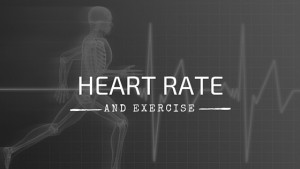Heart Rate & Exercise
Feb 3 As one year gives way to the next, many of us perform our yearly ritual of developing New Year’s resolutions. We form a plan to better ourselves in the coming year and then hope we can stick to it. Many of these resolutions involve exercise and improved health.
As one year gives way to the next, many of us perform our yearly ritual of developing New Year’s resolutions. We form a plan to better ourselves in the coming year and then hope we can stick to it. Many of these resolutions involve exercise and improved health.
Getting in better shape is always a great goal, but how do we know how hard to push ourselves to safely yet effectively see the benefits of our effort? While there are many ways we can measure exercise intensity, heart rate (HR) is one of the best, and often the easiest, for novice and experienced athletes alike.
With wearable technology such as heart rate monitors, Fitbit and Apple Watch, measuring your HR has never been easier. But taking your HR the old-fashioned manual way works just as well. Once you have your HR, you need to know what it means and what your goal range is.
The easiest calculation is 220 – Age = Max Heart Rate (MHR). Once you find your MHR it is time to find your Target Heart Rate (THR.) THR typically ranges from 50 to 80 percent of your MHR.
For example, a 40-year-old male would have an MHR of 180 beats per minute, and his THR would be 90 to 144 BPM. Once you determine your THR zone, the next step is to know where in that range you need to be to get the results you want. Many factors come into play here as well.
Are you starting a new exercise program, or are you looking to improve or increase an existing one?
If you are trying to get back into shape after a period of inactivity, it is best to stay closer to the 50 percent zone. This will prevent overtraining and lower the risk of injury by doing too much too soon. It likely also will increase the odds that you feel successful afterwards and get excited about your next workout.
Maybe you already have been working out for a while and want to make sure you are getting the most out of your routine. In this scenario, you likely will find better results by increasing the intensity of your exercise to the upper levels of your THR.
Another factor is the duration of your exercise. When your plan is to exercise for extended periods, such as walking or running for 45 to 60 minutes, you want to be closer to the lower end of your THR.
Trying to go for a five-mile run at 80 percent of your THR probably won’t end well. On the other hand, if your exercise is shorter, it is better to increase the intensity to the upper limits of your THR.
What are you trying to achieve during exercise? Clearly one common goal is weight loss and cardiovascular fitness. If you have used a treadmill or elliptical, then you probably have seen programs titled “fat burn” or “cardio.”
The machine will monitor your HR and adjust the intensity to match your goal. At the lower end of your THR, the majority of the calories you burn are from fat. On the other hand, at the higher end of your THR, you burn more calories overall.
Therefore, if you choose the fat burn program, the treadmill will maintain an intensity to keep you closer to the 50 to 60 percent of THR. The cardio program will do the opposite and increase the intensity closer to the 70 to 80 percent.
However, this is not as clear-cut as it sounds. While it is true that the percentage of fat calories burned is higher at low intensities, the shear amount of calories burned at the upper levels of your THR is much greater. So if your goal is weight loss, it is better to burn more calories.
The heart is a muscle, and like all muscles it is healthier with regular exercise. Monitoring your HR will help you avoid both under training and over training. Exercise regimens below your THR will not put enough stress on your body to make any beneficial difference. At the same time, sustained exercise well above the upper limits of your THR is not necessarily helpful and may increase the risk of injury.
Armed with this information and your goal for a healthier new year, you are primed and ready to maintain a successful exercise plan. All that’s left now is to get out there and get moving.
